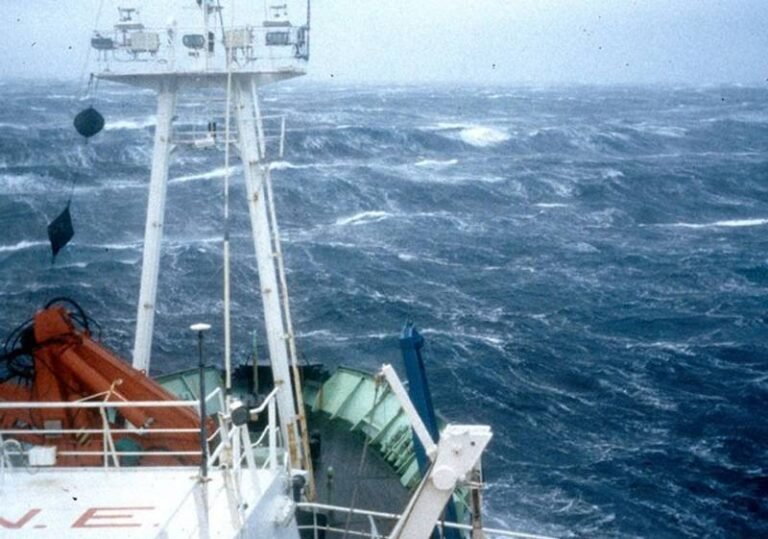The Night of the Monster Waves: A 25-Year Reflection
On the night of February 8, 2000, the crew of the British research vessel, Royal Research Ship (RRS) Discovery, faced a storm of unprecedented magnitude. The wind speeds had been increasing, creating conditions that none aboard had ever experienced before.
From mid-afternoon on the 8th to mid-morning on the 9th, wave heights reached staggering heights, with some as tall as 29.1 meters – equivalent to a ten-story building. These abnormal conditions, 250 km west of Scotland in the North Atlantic, left a lasting impact on the vessel and its occupants.
The storm shattered an interior window, causing structural damage, and a lifeboat came loose, resulting in injuries to the crew. The captain and marine crew’s quick thinking and actions prevented a potential disaster, including a near collision with a trawler that was narrowly avoided.
However, amidst the chaos, a significant scientific discovery emerged. The wave heights recorded that night turned out to be the largest ever measured by scientific instruments in the open ocean.
A Night of Terror and Discovery
Onboard the RRS Discovery that fateful night was NOC Chief Scientific Officer, Professor Penny Holliday. Reflecting on the experience, she recalls the sheer terror of facing waves unlike anything she had encountered before.
Professor Holliday’s research following the event revealed that the immense waves were not isolated incidents but part of a larger storm system generating waves regularly exceeding 18 meters in height. The data collected shed light on a resonance effect driven by consistent westerly winds, amplifying the wave heights to unprecedented levels.
Implications for Ocean Science and Engineering
The research stemming from that night’s events led to a better understanding of extreme wave phenomena and its implications for marine engineering. The data challenged existing assumptions about wave heights that ships and offshore platforms could withstand, prompting a reevaluation of design standards.
Today, engineers and scientists utilize advanced models informed by this research to predict and prepare for extreme weather events more effectively. However, as Professor Holliday emphasizes, the power of the ocean can still surprise and challenge us, especially as climate change continues to impact sea temperatures and wind patterns.
Looking Towards the Future
As we commemorate the 25th anniversary of that tumultuous night on the RRS Discovery, it serves as a reminder of the ocean’s unpredictable nature and the importance of ongoing research to mitigate the impacts of extreme weather events. The lessons learned continue to inform our understanding of ocean dynamics and prepare us for the challenges that lie ahead.
*The RRS Discovery involved in the expedition has since been retired, replaced by the current RRS Discovery in 2013.
Source: National Oceanography Centre (NOC)

